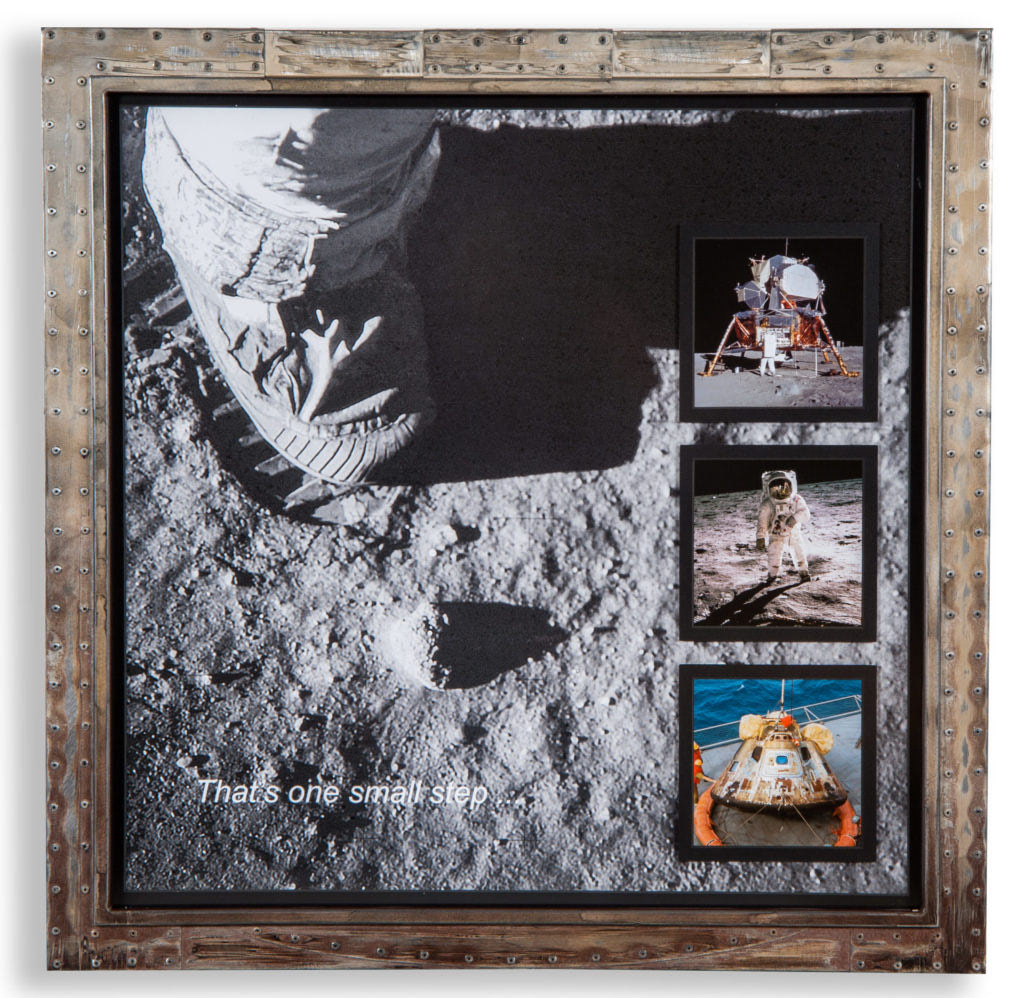For many Americans, 1969 is best known as the year that man first set foot on the moon. But among the glazing industry, it’s also known as the year that Tru Vue® took a big step forward with the launch of Reflection Control® Glass.
That first moment is known for making history, while the second is all about preserving it. Today, on the 50th anniversary of the moon landing on July 20, 1969, we’re proud to celebrate both milestones with the story of a custom framing project that commemorates Apollo 11 using Reflection Control Glass.
The moment
Today, the landmark Apollo 11 mission is no less inspirational than it was a half century ago. It’s that very inspiration that prompted Myrna Dow, owner of High Desert Frameworks in Bend, Oregon, to create a four-photo framed composition honoring the pioneering astronauts’ spirit and success.
Myrna’s piece features a tight photograph of astronaut Neil Armstrong stepping onto the moon’s surface for the first time, with an overlay of his now-famous quote, “One small step for man, one giant leap for mankind.”
To showcase other pivotal moments in the mission, Myrna also included in her project three smaller images – one of the Lunar Module, one of astronaut Buzz Aldrin’s moonwalk as the second man on the moon, and one of the Command Module Columbia’s capsule on Earth.
The design
“As the moon landing set in motion further space exploration, Reflection Control was just the beginning for premium glazing in the custom framing industry,” Myrna says about Tru Vue’s original value added glazing product, now 50 years old.
Reflection Control eventually was followed by Museum Glass®, which today stands alongside Optium Museum Acrylic® as Tru Vue’s premium glazings by combining a superior anti-reflective viewing experience with 99% UV protection.
“Reflection Control is still used in some applications,” Myrna explains, “but to use it to its best abilities in a framing project, you should only use one to two mat boards to ensure there is no significant air gap between the glazing and the artwork as a non-glare glazing will distort the image if there is too much space.”
Because of this, for the moon landing project, Myrna created a thin layer of mat to frame the smaller inset photos. She also used a small mat liner around the edge to keep everything as level as possible without adding much depth. For the frame, Myrna selected a uniquely distressed, welded steel 30” x 30” frame from Atomic Frames.
“I wanted to emulate the burned, tarnished and colorful patina of the Command Module Columbia after blasting through the atmosphere to return to Earth,” she says. “This piece – which is on display in my shop – has generated a lot of interest from customers.”
The results
Reflection Control was a major advancement when it debuted, and it’s a great example of how far innovations in glazing have taken the industry – and are still helping custom framers take new steps today with products such as Museum Glass and Optium Museum Acrylic.
“When you think about how much progress has been made since the end of the ’60s, it’s exciting to consider what’s next in any industry, including custom framing,” Myrna says.
Do you have an interesting framing story? Share it on social media by tagging Tru Vue glazing and using #TruVueUnseenHeroes for the opportunity to be featured and win great prizes.
Share this Article:
This article is intended for educational purposes only and does not replace independent professional judgment. Statements of fact and opinions expressed are those of the author(s) individually and, unless expressly stated to the contrary, are not the opinion or position of Tru Vue or its employees. Tru Vue does not endorse or approve, and assumes no responsibility for, the content, accuracy or completeness of the information presented.
